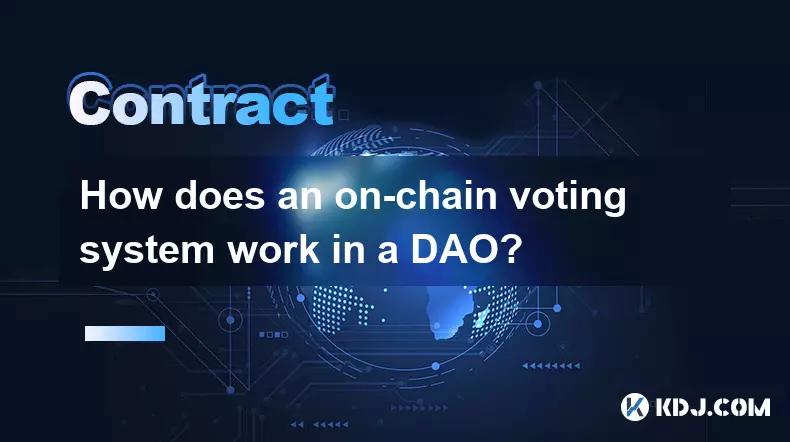-
 bitcoin
bitcoin $101752.865364 USD
-1.09% -
 ethereum
ethereum $3382.985899 USD
-1.38% -
 tether
tether $0.999658 USD
0.04% -
 xrp
xrp $2.272505 USD
-1.51% -
 bnb
bnb $989.089004 USD
0.14% -
 solana
solana $156.962612 USD
-3.08% -
 usd-coin
usd-coin $0.999776 USD
0.01% -
 tron
tron $0.290786 USD
-0.69% -
 dogecoin
dogecoin $0.174594 USD
-2.86% -
 cardano
cardano $0.560085 USD
-3.55% -
 hyperliquid
hyperliquid $40.023704 USD
-5.75% -
 chainlink
chainlink $15.324649 USD
-2.78% -
 bitcoin-cash
bitcoin-cash $493.576540 USD
-3.52% -
 zcash
zcash $571.320038 USD
-12.05% -
 stellar
stellar $0.280066 USD
-4.26%
How to backtest a trading strategy for crypto contracts?
Accurate crypto futures backtesting requires clean historical data, realistic fees/slippage, and accounting for funding rates to avoid overfitting and bias.
Nov 08, 2025 at 10:19 pm

Understanding the Basics of Crypto Futures Backtesting
1. Backtesting a trading strategy for crypto futures involves applying your rules to historical market data to assess how it would have performed. This process helps traders evaluate profitability, risk exposure, and consistency before risking real capital. The foundation lies in accurate data and a clear set of entry, exit, and position sizing conditions.
2. Historical price data for crypto perpetuals and futures contracts must include open, high, low, close, volume, and funding rates where applicable. Exchanges like Binance, Bybit, and OKX provide API access to such datasets, often down to 1-minute granularity. Inaccurate or incomplete data can lead to misleading results.
3. A well-defined strategy includes specific triggers for long and short entries, stop-loss levels, take-profit targets, leverage usage, and handling of liquidation risks. These parameters must be coded precisely when using algorithmic backtesting platforms.
4. Using clean, tick-level data significantly improves the reliability of backtest outcomes, especially for high-frequency strategies relying on tight spreads and fast execution.
Selecting the Right Tools and Platforms
1. Several tools support crypto futures backtesting, including TradingView (with Pine Script), QuantConnect, Backtrader (Python-based), and specialized platforms like Kryll or Coinrule. Each offers different levels of customization and integration with live exchanges.
2. Python libraries such as CCXT allow users to fetch historical futures data directly from exchanges. Combined with Pandas and NumPy, developers can simulate trades under realistic slippage and fee models. This level of control is essential for advanced strategies involving dynamic position management.
3. Some platforms simulate funding payments automatically, which is critical for perpetual contracts. Strategies that hold positions over extended periods must account for these recurring costs, as they can erode profits even if price movement aligns with the predicted direction.
4. Backtesting engines that incorporate latency, order book depth, and exchange-specific fees offer more realistic performance estimates than those assuming idealized market conditions.
Avoiding Common Pitfalls in Strategy Evaluation
1. Overfitting occurs when a strategy is excessively tuned to past data, capturing noise rather than genuine market patterns. This leads to excellent historical results but poor live performance. To mitigate this, use walk-forward analysis and out-of-sample testing periods.
2. Survivorship bias arises when backtests use only currently listed pairs, ignoring delisted or failed assets. For instance, testing solely on BTC/USD or ETH/USD ignores altcoin futures that may have ceased trading due to low volume or project failure.
3. Look-ahead bias happens when future information inadvertently influences past decisions in the model. Examples include using volume-weighted average price (VWAP) calculated over a period not yet available at the time of trade execution.
4. Transaction costs—comprising taker/maker fees, funding rates, and slippage—must be factored into every simulation. Ignoring them inflates returns and misrepresents viability, particularly for scalping strategies with frequent turnover.
5. Robustness checks across multiple market regimes—trending, ranging, volatile, and low-volatility phases—help determine whether a strategy adapts effectively or fails outside narrow conditions.
Frequently Asked Questions
What data sources are most reliable for crypto futures backtesting?Binance, Bybit, and BitMEX provide comprehensive historical datasets via public APIs. Third-party providers like Kaiko and CryptoCompare aggregate cleaned, time-synchronized data across exchanges, reducing inconsistencies caused by downtime or irregular updates.
Can I backtest arbitrage strategies between exchanges?Yes, but it requires synchronized tick data from multiple venues and accurate modeling of withdrawal times, network congestion, and transfer costs. Latency differences between exchanges can make theoretical profits unattainable in practice, so simulations must include execution delays.
How do funding rates impact backtest accuracy?Funding rates affect net returns for leveraged long or short positions held across settlement periods. A strategy entering a prolonged short during high negative funding may appear profitable in price terms but lose money after cumulative payments. Accurate backtesting systems apply these costs at each interval.
Is it possible to backtest with variable leverage?Advanced frameworks support dynamic leverage based on volatility, account equity, or signal strength. However, increasing leverage during drawdowns raises liquidation risk. Models must simulate margin balance updates per candle or tick to reflect real contract behavior accurately.
Disclaimer:info@kdj.com
The information provided is not trading advice. kdj.com does not assume any responsibility for any investments made based on the information provided in this article. Cryptocurrencies are highly volatile and it is highly recommended that you invest with caution after thorough research!
If you believe that the content used on this website infringes your copyright, please contact us immediately (info@kdj.com) and we will delete it promptly.
- Ripple (XRP) in 2026: Hold or Fold? A Look at XRP's Future and Emerging DeFi Alternatives
- 2025-11-08 18:35:01
- Zcash ZEC Coin Price Explosion: From Privacy Niche to Center Stage
- 2025-11-08 18:55:01
- Berachain Price Prediction: Navigating the Honeycomb Hype in Crypto
- 2025-11-08 18:55:01
- Arthur Hayes, Gold, and Bitcoin: A Modern Monetary Trinity?
- 2025-11-08 19:15:01
- Shiba Inu's Next Move: Navigating a Shifting Market
- 2025-11-08 19:20:01
- Pakistan's Crypto Crossroads: Balancing Opportunity with Asset-Backed Realities
- 2025-11-08 19:20:01
Related knowledge

How do you safely send Ether to another contract?
Nov 09,2025 at 06:40pm
Sending Ether to Smart Contracts: Key Considerations1. Verify that the receiving contract has a payable fallback function or a designated payable func...

What is a state machine and how can a contract be designed as one?
Nov 08,2025 at 02:19pm
Understanding State Machines in Blockchain Context1. A state machine is a computational model used to design systems that transition between defined s...

How does a bonding curve work and how is it used for token sales?
Nov 09,2025 at 04:00pm
Understanding the Mechanics of Bonding Curves1. A bonding curve is a mathematical function that links the price of a token to its supply. As more toke...

How do you upgrade a smart contract using the UUPS proxy pattern?
Nov 09,2025 at 01:19am
Understanding the UUPS Proxy Pattern in Smart Contract DevelopmentThe UUPS (Universal Upgradeable Proxy Standard) pattern has become a cornerstone in ...

How does an on-chain voting system work in a DAO?
Nov 09,2025 at 04:20pm
Understanding On-Chain Voting in DAOs1. An on-chain voting system operates directly on a blockchain network, allowing token holders to cast votes that...

How do you handle fixed-point math and decimals in Solidity?
Nov 08,2025 at 11:40pm
Understanding Fixed-Point Arithmetic in Solidity1. Solidity does not natively support floating-point numbers, which means developers must rely on fixe...

How do you safely send Ether to another contract?
Nov 09,2025 at 06:40pm
Sending Ether to Smart Contracts: Key Considerations1. Verify that the receiving contract has a payable fallback function or a designated payable func...

What is a state machine and how can a contract be designed as one?
Nov 08,2025 at 02:19pm
Understanding State Machines in Blockchain Context1. A state machine is a computational model used to design systems that transition between defined s...

How does a bonding curve work and how is it used for token sales?
Nov 09,2025 at 04:00pm
Understanding the Mechanics of Bonding Curves1. A bonding curve is a mathematical function that links the price of a token to its supply. As more toke...

How do you upgrade a smart contract using the UUPS proxy pattern?
Nov 09,2025 at 01:19am
Understanding the UUPS Proxy Pattern in Smart Contract DevelopmentThe UUPS (Universal Upgradeable Proxy Standard) pattern has become a cornerstone in ...

How does an on-chain voting system work in a DAO?
Nov 09,2025 at 04:20pm
Understanding On-Chain Voting in DAOs1. An on-chain voting system operates directly on a blockchain network, allowing token holders to cast votes that...

How do you handle fixed-point math and decimals in Solidity?
Nov 08,2025 at 11:40pm
Understanding Fixed-Point Arithmetic in Solidity1. Solidity does not natively support floating-point numbers, which means developers must rely on fixe...
See all articles





















![The Graph Price Prediction [GRT Crypto Price News Today] The Graph Price Prediction [GRT Crypto Price News Today]](/uploads/2025/11/07/cryptocurrencies-news/videos/690d4df44fe69_image_500_375.webp)




















































